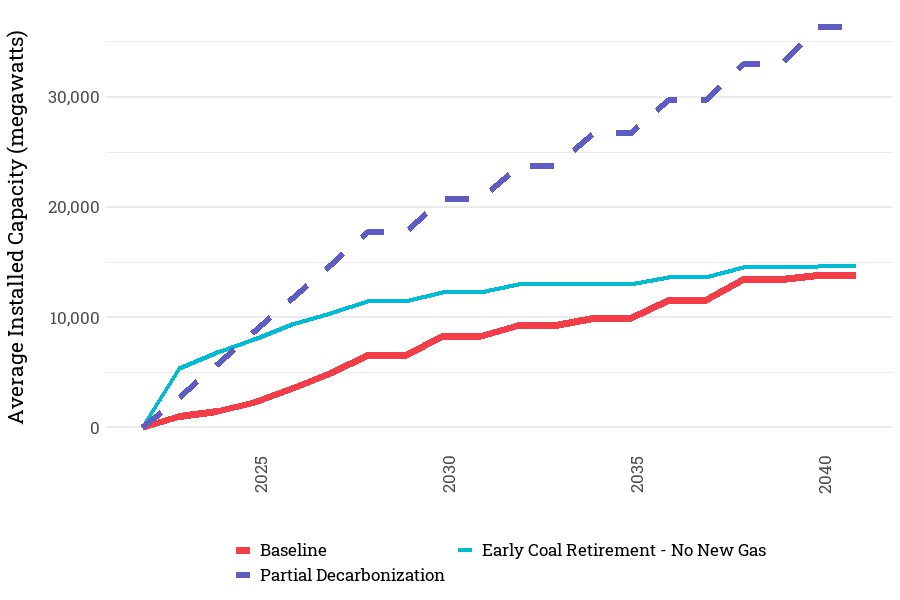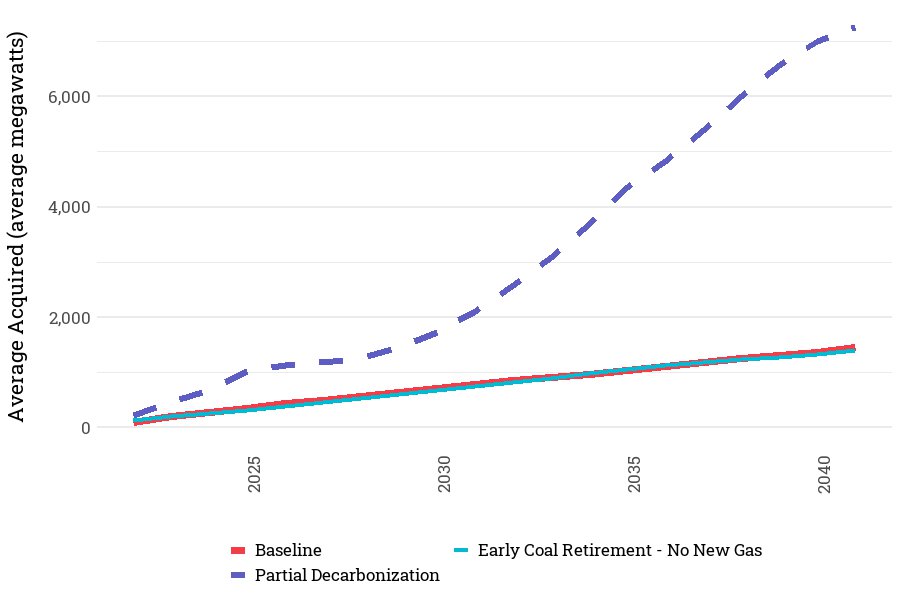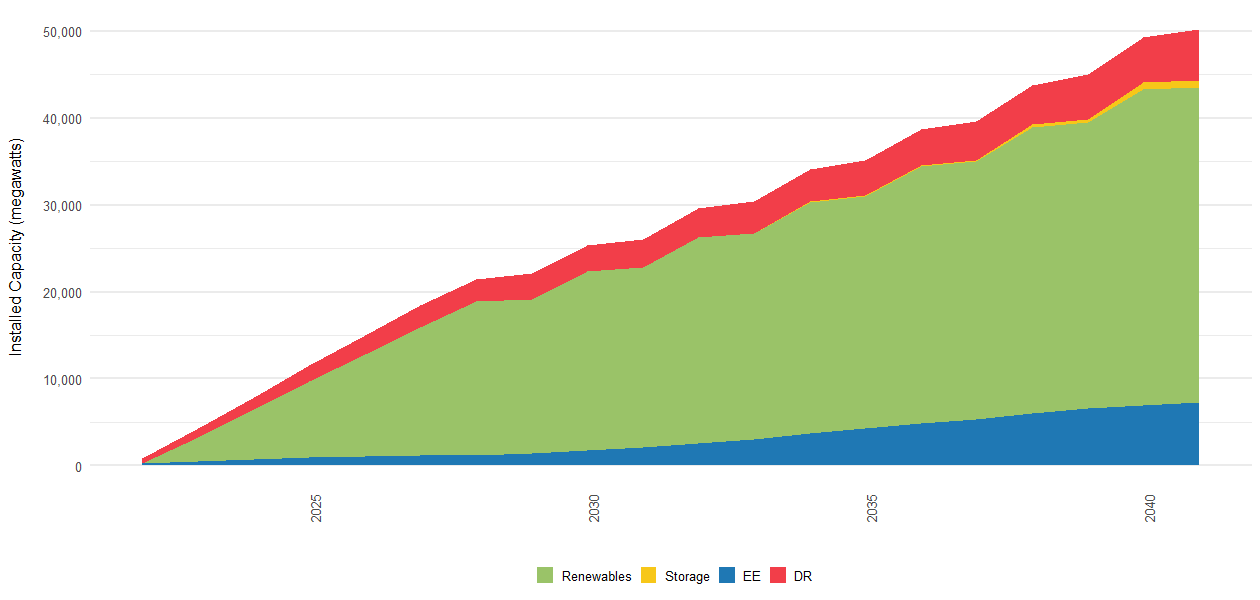As the increase in demand on the electric system was beyond the beyond the resource expansion that could be supported by the structure of our analysis, the Council conducted a partial decarbonization test. To be able to test the impact of decarbonization on the resource strategy, the Council removed a substantial proportion of the demand associated with the production of hydrogen by electrolysis. While this reduced the likelihood of reaching the Oregon and Washington targets for reducing greenhouse gas emissions, it provided a directional analysis of the possible impacts to resource additions. It also still represents aggressive emissions reductions relative to baseline conditions in the analysis. By 2040, this more moderate - but still aggressive - emission reduction increased the demand for electricity by just over 52 percent.
In response to this increased demand, the analysis showed a substantial increase in the addition of renewable resources relative to other scenarios the Council explored.
Average Renewable Build by Decarbonization Scenario

The Council also altered the supply of energy efficiency and demand response to incorporate the additional anticipated demand for electricity. This analysis showed substantial increases in energy efficiency acquired.
Average Energy Efficiency Acquired by Decarbonization Scenario

The analysis also showed a substantial uptake of demand response to support system adequacy.
Average Demand Response Acquired by Decarbonization Scenario

The resource addition also included an expected 800 megawatts of battery storage capacity. Part of the renewable resource addition included an expected 2,100 megawatts of solar generation nameplate capacity with on-site batteries. In addition, there were some conditions where the increased demand resulted in a conventional geothermal power plant being part of the least-cost resource addition for this scenario.
Aggregate Resource Build for Partial Decarbonization Analysis



